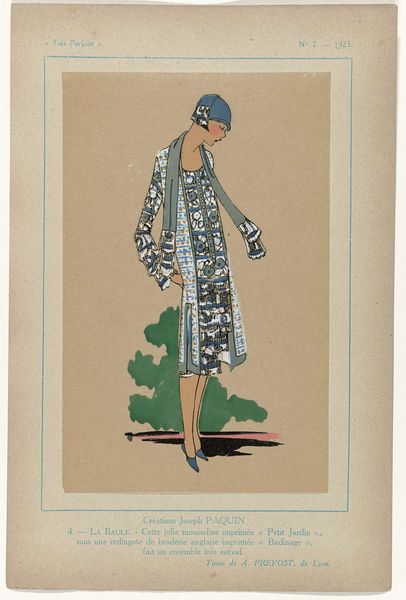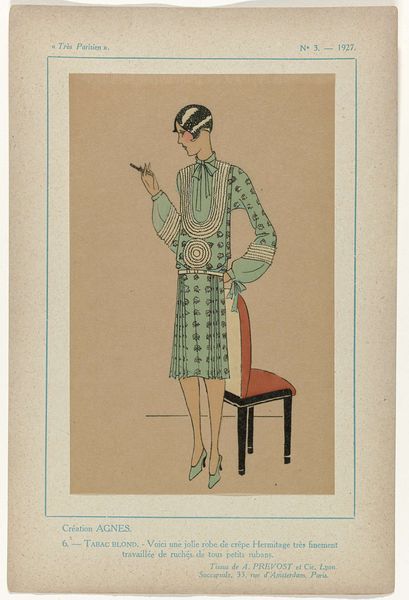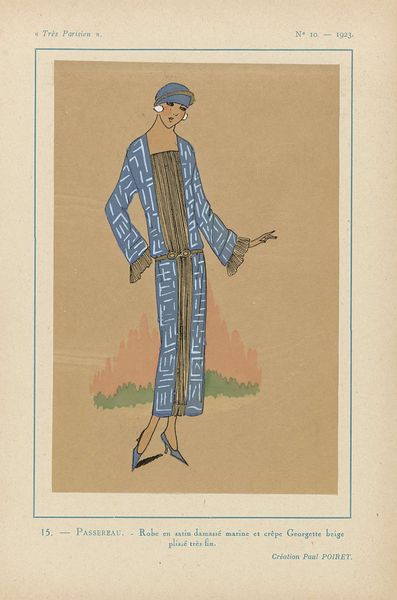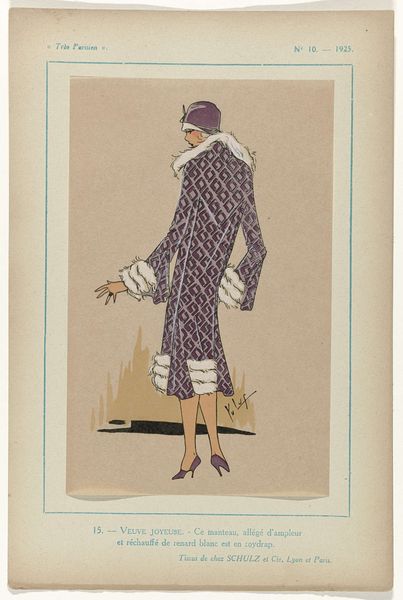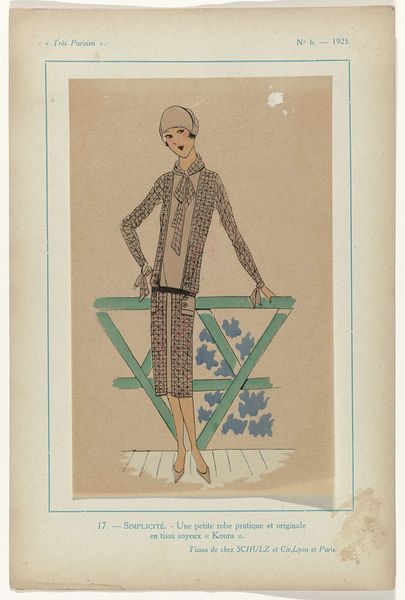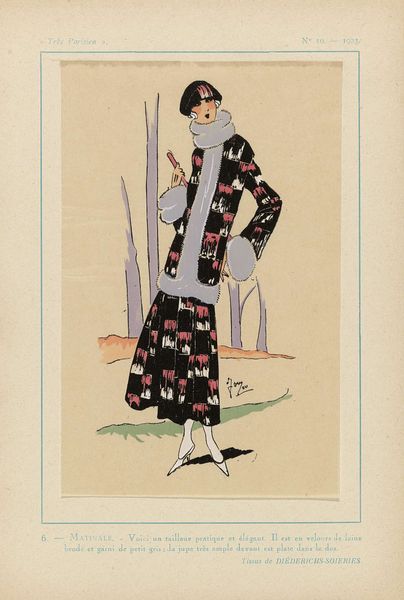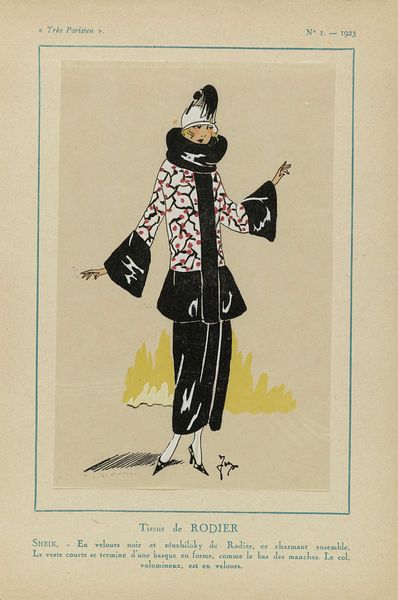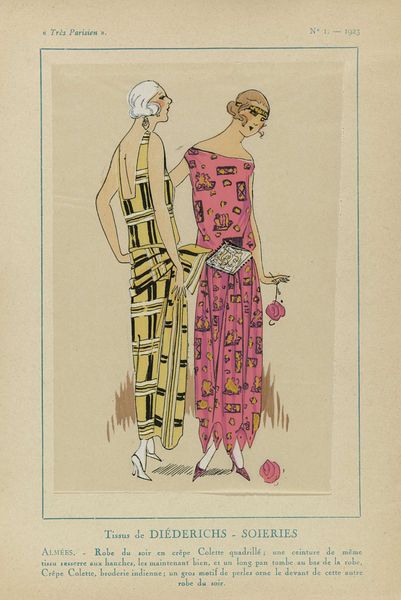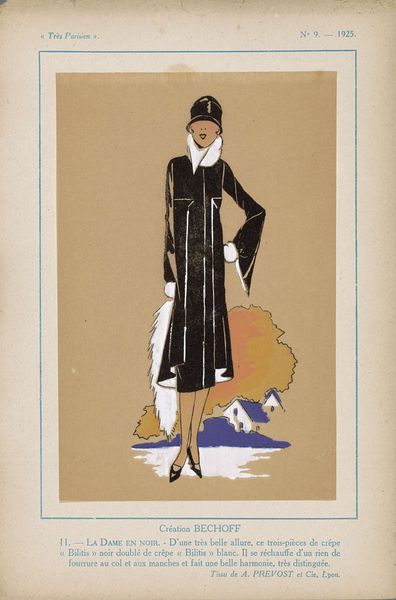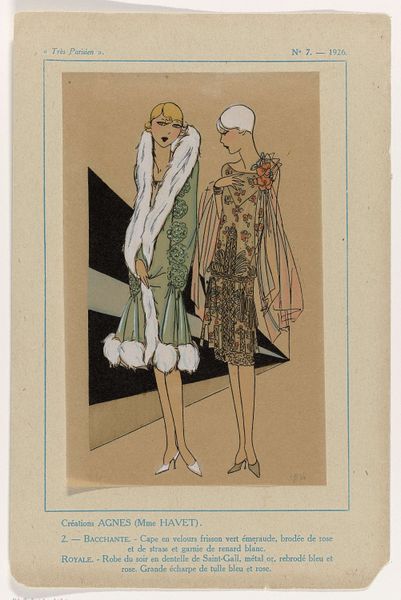
graphic-art, print
#
portrait
#
art-deco
#
graphic-art
# print
#
figuration
#
flat colour
#
watercolour illustration
#
decorative-art
Dimensions: height 257 mm, width 177 mm
Copyright: Rijks Museum: Open Domain
Editor: Here we have "Très Parisien, 1927, No. 6", a print now residing in the Rijksmuseum. It's attributed to an anonymous artist, yet the design specifies "Création PREMET." I find its flat colour and graphic style quite striking. How would you unpack this intriguing image? Curator: It’s delicious, isn’t it? It screams Art Deco Paris with that elegant silhouette. Look at the bold outlines and the simplified form; the anonymous artist captures a very particular ideal of the modern woman – chic, streamlined, almost… diagrammatic. What does that abstracted presentation convey to you about her role, or status, at that moment in time? Editor: It feels both empowering and restrictive. She's fashionable, modern, but almost like a paper doll. The "Création PREMET" signature suggests she's a vehicle for the designer's art, rather than a person. Curator: Precisely! Fashion plates like this were less about individual portraiture and more about promoting a lifestyle, a desire. The “Indiana” dress – probably a direct reference to an imagined exoticism – would’ve spoken volumes to readers about luxury and aspirational living. It’s pure fantasy fueled by consumerism. You've spotted how she appears less real woman, and more fashionable artifact. Editor: So it’s both beautiful and a little… cynical? Curator: Art often dances in those murky waters! And understanding that tension, between beauty and intent, is what makes analyzing art so fascinating. This print, so outwardly decorative, contains a real social commentary simmering beneath the surface, no? Editor: Absolutely. I’ll never look at a fashion illustration the same way again. Curator: Nor should you. Now go forth and be cynical – in an art historical way, of course!
Comments
No comments
Be the first to comment and join the conversation on the ultimate creative platform.
